HIGHS, LOWS and MYTHS
Few utterances stir the soul and spirit of a sailor like the word “circumnavigation”, the visible tip of a vast iceberg mighty enough in the mind of most seafaring folk to change careers, restructure financial priorities and fuel any number of dreams (or nightmares, as the case may be).
The possibility, the temptation, the challenge: call it what you will, there is something about the prospect of one day taking the long way home that can reach deep inside sailing people and profoundly affect their outlook on work, personal relationships and the wider world. Success and failure assume a completely different dimension: all else pales besides the challenge that awaits at sea.
Almost anyone contemplating a venture of this magnitude must expect to have to go at least a few rounds with their inner demons along the way. Sometimes a circumnavigation will be best tackled in partnership, but the adventure can quite easily become so all-consuming as to leave the participants with energy only for themselves. Indeed there can be few situations in the scope of human relations that expose the foundations of a relationship to such unforgiving scrutiny: at sea, isolated in a hostile environment, there are no hiding places and no emergency exits through which to beat an honourable retreat. Sometimes the pressures involved bring people closer together, but if the façade has already begun to creak, it is likely no end of lies or half-truths will keep it together on the rolling deep.
THE “WHY?” QUESTION
Sailors have a special affinity for freedom and nature, yearning for and embracing the untamed elements of the sea; for us the life afloat serves as foil and counterweight to the strains and complexity of ‘ordinary’ life ashore. This philosophy creates fertile ground for ambitious dreams, dreams with potential very quickly to take on an unanticipated life of their own. Left unchecked, such dreaming tends to lead inexorably to The Dream. And, for as long as The Dream remains no more than a pleasant retreat from the frustrations of everyday life, why not?
But what if The Dream demands to be taken seriously? How far can we allow it to develop? Where do we draw the line – for our own protection? The ability silently to adapt our dreams to our reality without feeling the need to justify our action to ourselves or others is a skill that comes with experience. Social pressures are no basis on which to embark on an adventure: that way lies almost certain failure.
Contemplating a circumnavigation is one thing; allowing the fact that one has even begun to entertain the notion of sailing around the world to become known outside one’s own head is quite another. The thought, once uttered, has the power to cement or destroy long-term partnerships – and the repercussions tend to run and run either way. The idea rapidly develops an energy of its own that can seldom be deflected. The scheduled day of departure then becomes a catalyst for the subsequent evolution of human relationships: all concerns that need to be aired need to be aired before this point – leaving it for the sea to bring them out promises nothing but pain.
The germ of the idea of sailing around the world can lie dormant for years in some people, while in others it quickly takes root and multiplies. In either case, the prospects for a happy prognosis depend to a very considerable extent on spotting where reality ends and dreaming begins – and it is here that I hope I might be of some assistance. Youthful enthusiasm is not always the best policy.
MYTHS and IDOLS
The idea of circumnavigating usually finds its way into the sailor’s head through literary channels. The world has no shortage of dusty volumes documenting the triumphs and torments of those who, not content with living The Dream, came home to record the experience on paper (for posterity, for the benefit of those to come after them or perhaps just to help replenish the kitty). The works of men like Wilfried Erdmann, Rollo Gebhard and Bobby Schenk continue to hold sway over German bookshelves, not least because of the efforts of their publisher to keep them there untroubled by the output of newer exponents of the art (who might have more recent experiences to share). This money-for-old-rope arrangement, which offers clear advantages from a cost-benefit perspective, seems to suit both sides very well. Once again I find myself reminded of Bobby Schenk’s apt and amusing observation to me that it’s easy to spot a successful publisher: he’s the one slurping champagne out of the skulls of his authors.
The publishing trade has not entirely succeeded in locking up the market, however, and there remain plenty of other idols whose authenticity or humour, for example, have won for their nautical confessions a place in the heart of the sailing readership (and implanted or nourished the thought of one day crossing the same waters). German-speaking readers need look no further than Tania Aebi, Wolfgang Hausner, Hugo Wehner oder Burghard Pieske for unforgettable tales and a generous helping of dream scenarios ideally suited as an escape from the tribulations of everyday life. A feature common to all of the books is that they inspire dreams by granting the reader an insight into another world and fuelling the great “what if?” If they can do it, I could … Couldn’t I?
The book market’s capacity for idols though follows strict economic rules defined by purchase price, the size of the potential readership (sailors and dreamers) and, not least, the number of significant annual events (birthdays, Christmas, etc.) for which easily obtainable gifts are required. The books, moreover, paint a predominantly positive picture that concentrates on the highlights and conveniently overlooks the dark side. Why would anyone take to print to focus on the negative aspects? Who has the courage to admit, perhaps, that the effort was not worthwhile – and who would publish them if they did?
In the German-speaking market at least, the manufactured scarcity of true sailor/author heroes means that new editions are often released with only minimal updating. On top of that, of course, we all have an inherent tendency to colour and reinterpret our experiences in a way that does not necessarily preserve the truth, the whole truth and nothing but. The possibility exists, in other words, that relying on books could leave the sailor with a mental image somewhat at odds with salty wet reality.
Ay, there’s the rub: books may be good for inspiration, but when it comes to information, the diligent reader would also be well advised to consider other sources to help fill in the blanks (and while finding other sources of information might have been quite a challenge in the past, today the only problem is likely to be filtering the wealth of information available). Seasoning big plans with a generous serving of truth increases the chances of surviving the realities of bluewater life when they make their presence felt. Or you can just hope for the best, but then everything comes down to pure luck.
Bluewater seminars too provide an excellent opportunity to close the gap between two worlds: the physical distance between chronicler and audience is minimal and, provided there is no stage, communication can proceed at a face-to-face level.
There seems no getting away from the fact that in Germany we have very few sailing heroes – a reflection, perhaps, of the status of our sport in a country so thoroughly obsessed with kicking strips of dead cow skin around a field. Bobby Schenk’s “Who’s who” of circumnavigators lists just 74 successful crews from the German-speaking world. While their number is really quite remarkably small, the valuable information to be gleaned from their answers to Bobby Schenk’s standard set of ten questions should on no account be overlooked. The remarks introducing the list make interesting reading too, stressing as they do the elite nature of the achievement. It seems, without wishing in any way to diminish the personal exertions (and sufferings) of the perpetrators, that there is still an element of the magical to a successful circumnavigation. Are we dealing here with a club for the enlightened few or are these in truth ordinary people who find their undoubtedly out of the ordinary achievements recast retrospectively to fit some imagined hero status? Would-be circumnavigators would be well advised to ask the same questions of themselves.
The situation outside Germany is rather different. The book market in the USA, for example, is enormously fertile by comparison, mainly because a much larger proportion of authors there publish and market their books and eulogies themselves. Which is tough for the publishers, good for the authors and a boon for readers, who have the opportunity to find out all about what they might be getting into while there is still time to mould and adapt their own plans.
SCALING THE HEIGHTS, SURVIVING THE MUNDANE
Some circumnavigators clearly regard a full circle of the earth as the crowning glory of their life. People have an instinctive urge to stand out from the crowd and some circumnavigators undoubtedly come to view their achievement as the keystone of what makes them exceptional, what elevates them above the huddled masses. When someone of this persuasion puts pen to paper, the chances of the ego wresting control of the editorial process (leaving reality floundering in its wake) are self-evidently very high.
People aiming to make money by or from sailing, moreover, face a strong temptation to stretch the truth a little, to set themselves apart from the fleet and gain the sort of marketing leverage that might persuade a publisher to add their name to that list of favoured authors. Shifting nautical books at the prices usually applied is no easy business without an artificially limited range and, perhaps, some embellishment of the tale here and there.
The experience of circling the globe by boat has a profound effect on that vast majority of circumnavigators who feel no irresistible urge to condense their adventure into book form for posterity. Daunting it may be in terms of absolute scale, but at a fundamental level The Dream itself is straightforward and simple to grasp. The reality (as sober reflection might suggest) is much more complex and those who have experienced it first hand not surprisingly tend to see things from a rather different perspective. It is said – whisper it gently – that some sailors, humbled by the challenges survived, have actually been overjoyed to see home again.
Once at sea, the well-read sailor cannot help but end up comparing his or her own daily life with the content of the various literary efforts browsed and processed back on dry land. The yawning gulf between the two generally makes itself apparent very quickly: often it doesn’t take much practical experience at all to leave the myths of finely worded theory holed below the waterline. The same process soon reveals the heroes of yesterday to be ordinary mortals after all too. As WOLFGANG CLEMENS, an irreverent and hugely experienced feature of the German bluewater scene since 1987, once succinctly put it:
I’ve caught them all telling stories
SAILOR´S BLOGS
My recommendation for sailors interested in prolonged voyaging is to leave the classics of sailing literature on the shelf and spend more time reading blogs, which have the additional benefit of coming in much more easily digestible servings. Bloggers seem much less susceptible than book authors to the temptation of trying to be an expert in everything too, perhaps because they just don’t have the same need to big themselves up. I am struck time and again by the way certain authors repackage the expert knowledge of specialists in their writing as if it were their own: including a source reference for information in no way diminishes the person citing the source, quite the opposite. Accepting that there are limits to our knowledge is not a character flaw (unless the person doing the accepting is professing ignorance of how all that tax liability disappeared).
Sailor’s blogs, of which there are thousands to be found, provide a wonderful insight into the inner state of our peers in the process of reconciling their dreams and reality. Untainted by any profit motive, they generally ooze honesty and authenticity too. Good examples of the genre include the blogs of SV TAMORA oder SV AKKA
My bluewater portal provides access to thousands of yacht blogs ordered by
– SHIPS´S NAME from A – Z
– Catamaran Blogs
– Segelautoren Blogs
– Weltumsegler Blogs
A NUMBER UNKNOWN
The number of sailors who failed to complete their planned circumnavigation for whatever reason over the last decade must run into the thousands even just here in Germany. I will come back to the question of why this should be later on. Suffice it to say at this point that everyone has the right to freedom of thought and that all humane reasons are understandable and worthy of respect. I would not deny, however, that there are some who seek and find in the failures of others a reason – or excuse – to stay at home themselves too.
Indeed I am sure it is entirely possible for sailors to follow the mishaps of others online from the comfort of their own sofa and effectively talk themselves out of even risking the same mistakes themselves (actually perhaps this is just the elegant emergency exit required as the day of departure draws near and fear threatens to take control). Those with less backbone can always find solace in a convenient excuse, swiftly transforming their own problem into someone else’s.
THE LIFE PLAN
Much has been written about the ideal time in life to sail around the world. I have no interest in commenting on how people choose to organise the various elements of their life and even if I did, life tends to write its own rules anyway with no respect for our plans however carefully laid. All I will say is that a sabbatical year – a privilege most commonly accessible in Germany to those nourished at the public trough – will suffice only for sailors circumnavigating non-stop in a professional capacity (lured perhaps by the prospect of fame and fortune and pursued day and night by relentless sponsors eager to extract the maximum return). Across the Atlantic and back makes a more reasonable trip for a sabbatical year (although the Baltic is also always an option for those wishing to stay closer to home). Sailors who find themselves employed in the private sector are unlikely to be able to follow the sabbatical route unless they happen to have particularly rare and valuable skills, in which case they might get lucky.
Even now many sailors set out on the (initially) well-trodden path that leads to the seven seas only by way of education, career, family and, finally, the long wait until the next generation at last finds a way to stand on its own two feet. The idea is that with life’s ‘work’ accomplished, he and she redeem their ancient promise and set sail, but as I’m sure most of us recognise only too well, the intervening decades throw up so many choices and so many imponderables that few entrants make it even as far as the starting line.
Over the years I have heard countless tragic tales of how cruel twists of fate – everything from illness and divorce to insolvency and insurmountable problems with the children – have left sad ships abandoned in far-flung locations, the proceeds of their emergency sale at a knock-down price the only consolation for the deflated souls left struggling with the painful realisation that they spent too long chasing a false dream.
GOING IT ALONE
Crew size numbers tend to be decided by life rather than on sailing grounds (unless, of course, the trip is planned principally as a solo spectacular for external consumption and the presence of a partner would dilute the drama). While I would not in any way wish to diminish the voyages completed by singlehanders, I remain convinced that people deal most effectively with the challenges of an unforgiving sea as part of a team. I need hardly add, of course, that not everyone is fortunate enough in life’s lottery to find a partner with whom the round-the-world adventure can be shared and genuinely enjoyed. For more about the singlehanded option see here.
The list of possible sailing records for singlehanders has shrunk considerably of late, not least because everyone understands that records now often have little to do with raw curiosity and exploring the limits of personal capabilities and a great deal more to do with feeding the voracious media, which need first-hand accounts to keep the wheels of commerce turning and for which talk of dreams, challenges, the burning desire to triumph against the odds is no more than a convenient cover story to conceal the synthetic and fundamentally pointless nature of the undertaking.
When sailors backed by commercial sponsors and investors embark on extreme voyages with the aim of gaining exposure for marketing purposes, seamanship is often the first casualty: who needs to be careful when the first sniff of an emergency brings the helicopter racing over, bristling with photographers poised to capture the moment for maximum media leverage?
On the other hand, many male singlehanders undoubtedly still find themselves drawn to bluewater sailing by more primordial motivations, typically some variation on the age-old dream of the South Sea reclining among the swaying palms; for them the time at sea often amounts almost to an interlude, a time to draw breath between long periods ashore during which they are usually anything but alone. Swiss retired airline pilot Otti Schmid remains a favourite example of this more relaxed, hedonistic approach and his amusing reports from the front line are always worth a read.
Without wishing to rain on anyone’s parade, I should add a word of caution at this point for any solo sailors contemplating a prolonged stay on land in New Zealand, Australia or Brazil: lone wolves tempted by the exotic pleasures of a native honeypot should bear in mind that shacking up with anyone – formally or otherwise – for more than 24 months in any of these countries can be a very quick way to shed half your assets. This public service message has been brought to you by liveaboard Ingo B., who tells me he very nearly careered off this particular cliff himself.
MONEY
Let me begin by confirming that there is little possibility these days of funding a trip around the world out of money earned informally along the way. Writing books seldom does much for the bank balance and the same applies to blogs. While it is possible in theory to make money from blogging, by selling advertising space and promoting sponsors, modern internet users know click bait when they see it and understand that objectivity and profitability make uncomfortable bedfellows in the blogosphere. We need look no further than the BERNT LUECHTENBORG case for a sobering example of what can go wrong – for sailor and backers alike – when experiences at sea become too tightly intertwined with the pursuit of our daily bread.
Alex&Taru may well be the exception that proves the rule. Their blogs have earned them quite a measure of fame, although Taru’s passion for fashion and her enthusiasm for sharing photos of herself unencumbered by more than a minimum of clothing give them an edge few can match.
Not everyone has this kind of capital on board – and the fact that their “new” boat, a stunning Herreshoff classic, is at least as eye-catching as her lady owner certainly does no harm either.
pay-to-sailbe the paying guests family, friends, acquaintances or total strangers, can be a risky way to finance a trip and requires both very careful planning and a bigger boat than would otherwise be necessary. Anyone contemplating this route would do well to read up on the relevant legal niceties in likely countries of landfall too. While being boarded on arrival by booted elephants in uniform sounds bad enough, there exists a very real possibility in parts of the world of being unable to “invite” a guest to disembark at the end of an excruciating passage without also having to provide them with a free ticket for the flight home. Visitors aboard have a tendency (at least when they are paying) to plan their flights well in advance for cost reasons, moreover, which can play havoc with routing and create an intractable conflict of interests in the event of unfavourable weather. Trying to keep up with someone else’s itinerary is never a recipe for success.
No matter how close the relationship between owners and guests, the presence of visitors on board – even the dearly-beloved family – can very easily become very tedious indeed. The best visits of course – and this applies irrespective of whether the visitor is paying guest or friend – are those that end before we want them to. The sense that the main attraction of your floating pride and joy is its ability to provide free holiday accommodation can easily see visitors who arrived in the guise of friends leave as no more than acquaintances.
Jobs ashore remain the better alternative. Hourly rates will never amount to much, but bodies – and languages – are always in demand all over the world in the tourist industry. Sailors with the relevant skills always have the option of working for their less skilled but better funded fellow travellers too, but this can amount to little more than slavery if the local yards and service companies have already stitched up the market. This kind of work also carries with it the risk of upsetting the natives and it seems to be by no means unusual for local monopolists to stifle competition from visiting sailors with a quiet word to the police, security services or border control. Recently one yacht in the Canaries was found to have a cockpit full of sawdust and wood shavings. The occupant, it transpired, was recharging the coffers by working as a carpenter.
Ultimately the fact remains that most circumnavigations are funded out of savings, the proceeds of letting property or other forms of income. Finance never ceases to be a challenge: the collapse in interest rates in recent years, for example, has forced a great many sailors to change or postpone their plans.
THE PERFECT BOAT
The perfect boat for sailing around the world really needs to have a metal hull. The only choice to be made is whether to go with aluminium or steel and this tends to be decided by the capital available.
A metal hull can survive grounding, stranding and the crushing embrace of the ice. A GRP hull, no matter how enthusiastically reinforced, stands about as much chance as a fish in the desert when push comes to shove (just take a moment to see what the experts prefer in France and the Netherlands, for example). Plastic boats can and do make it safely all the way around, of course, but only if lady luck smiles on them. It really is that simple.
ALL THE WAY?And so we approach the heart of the matter: round the Atlantic or round the world? Political considerations – social conventions among sailors – the hazards to be faced on the world’s oceans – safety in numbers – transporting the boat home – selling the boat abroad: all this and more we will consider in Part 2,
promises
Peter Foerthmann



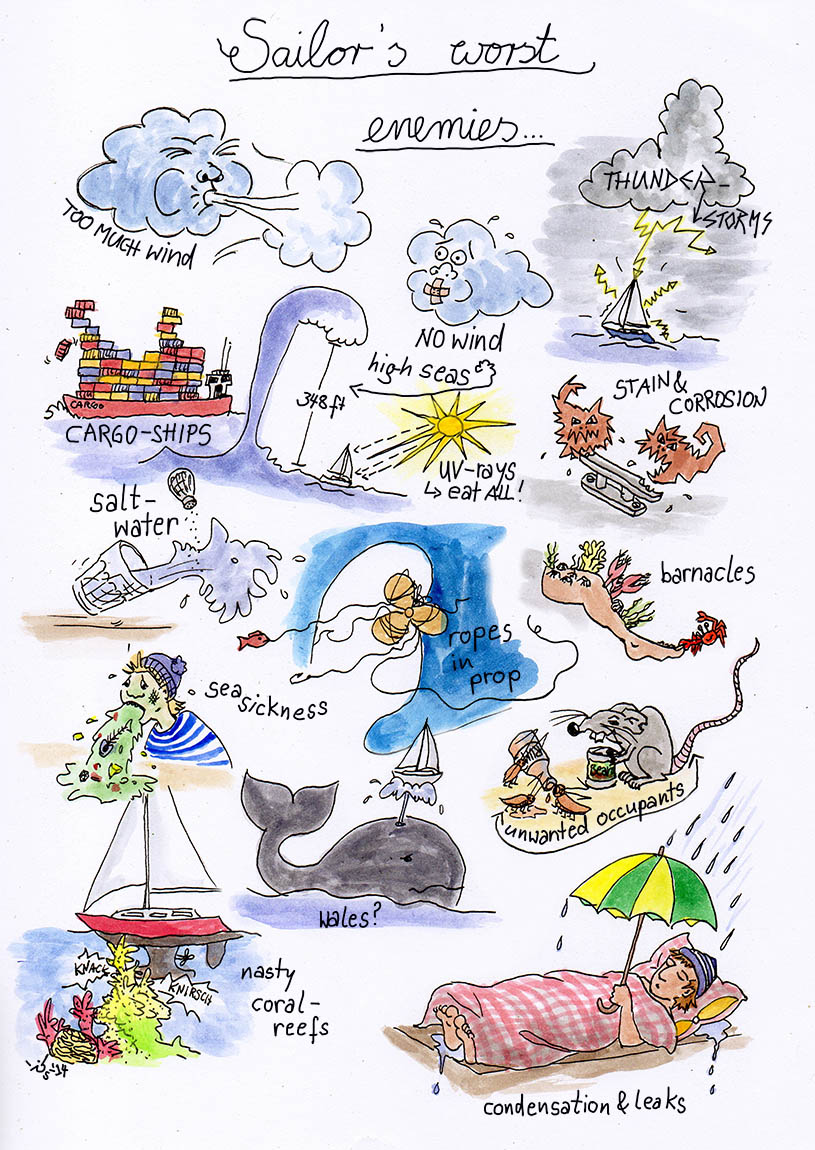
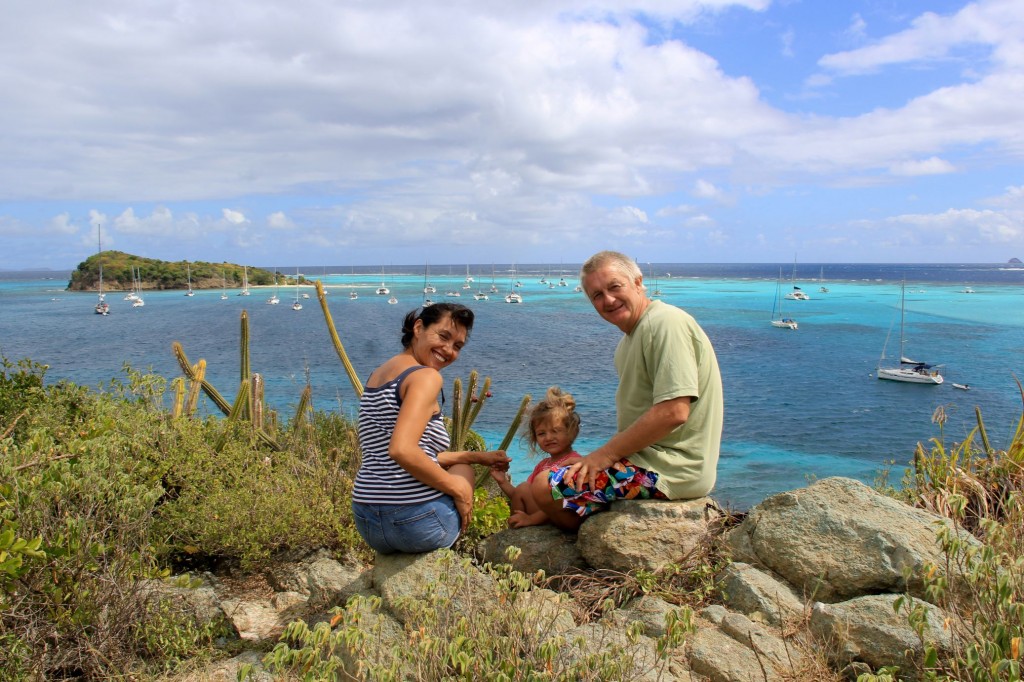
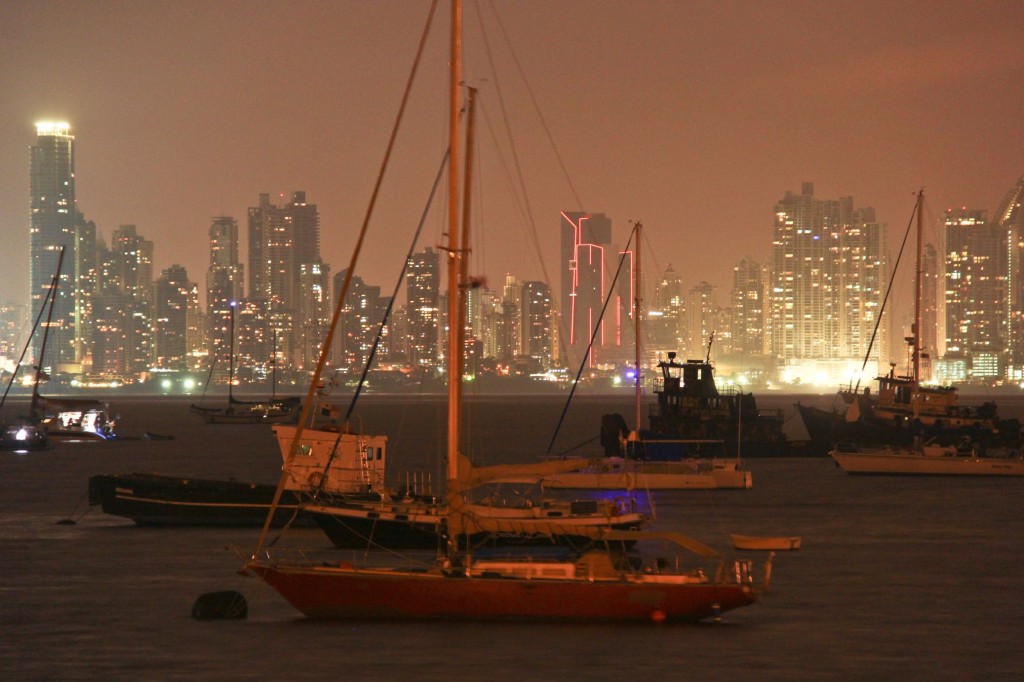

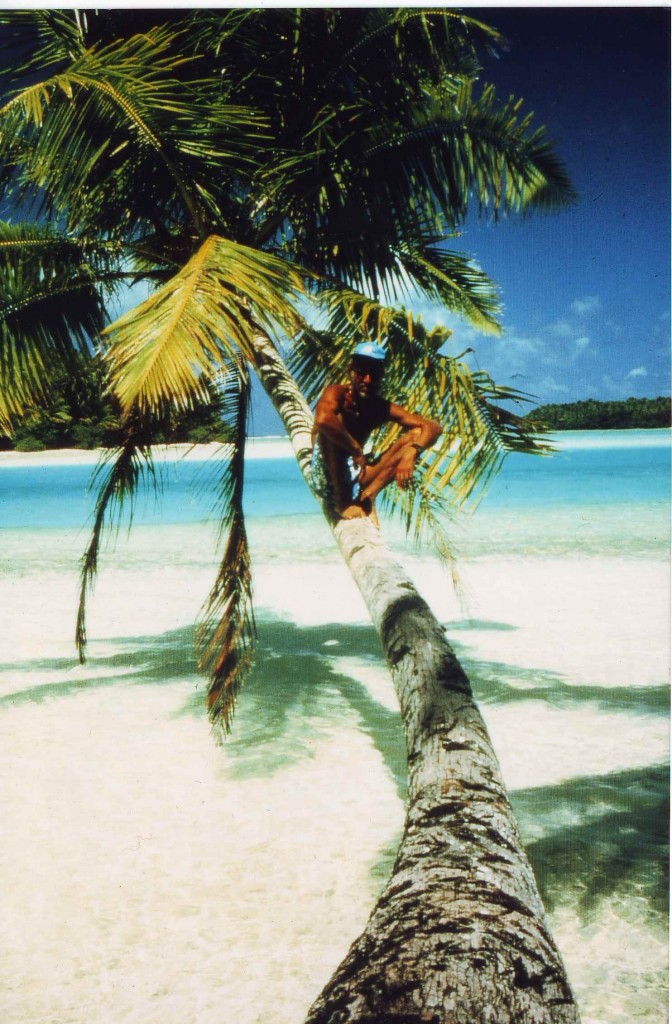
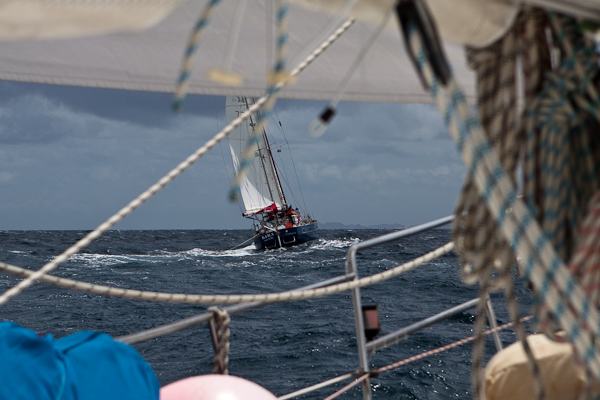
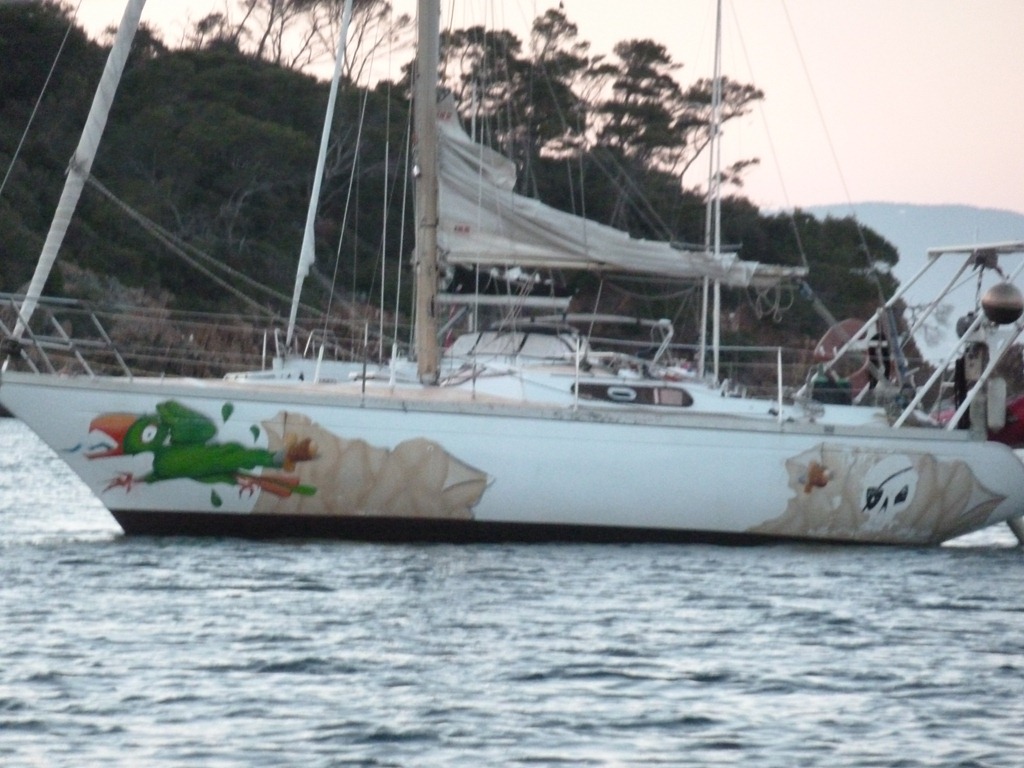
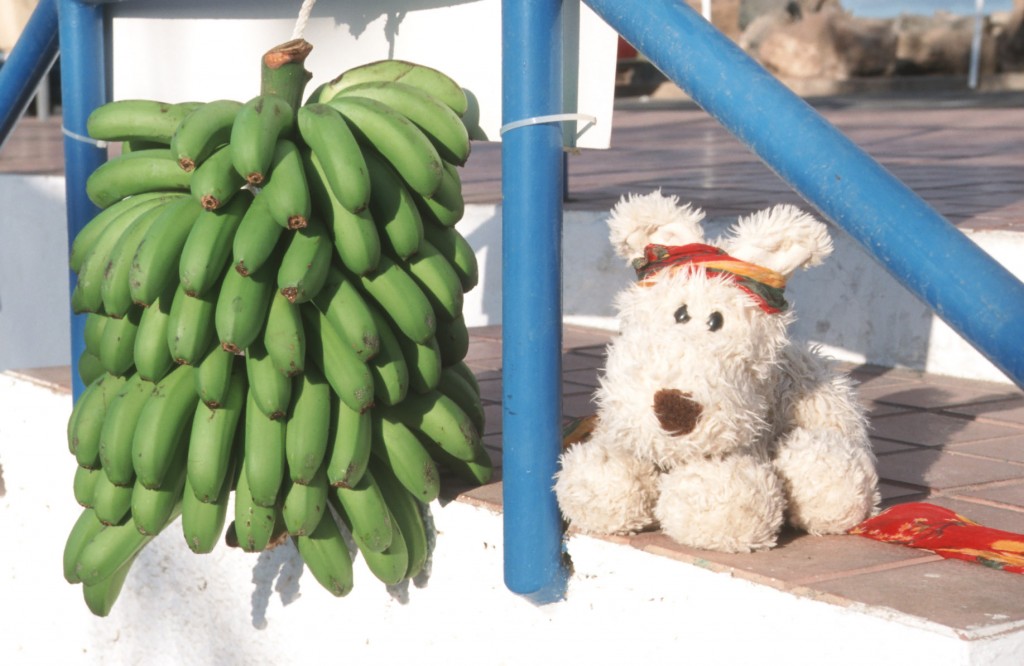
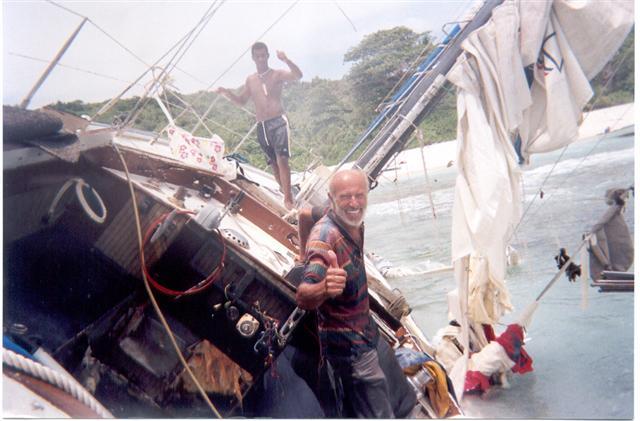
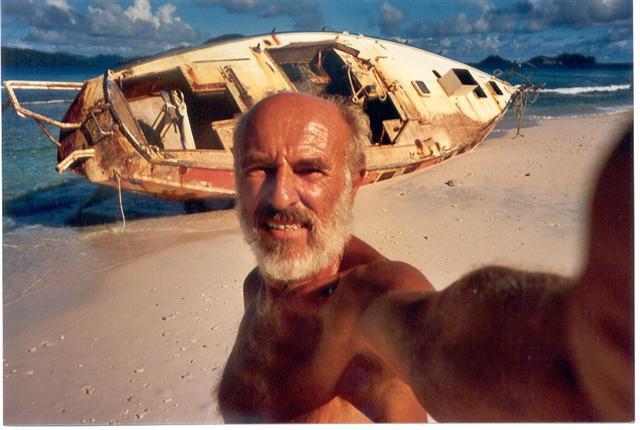

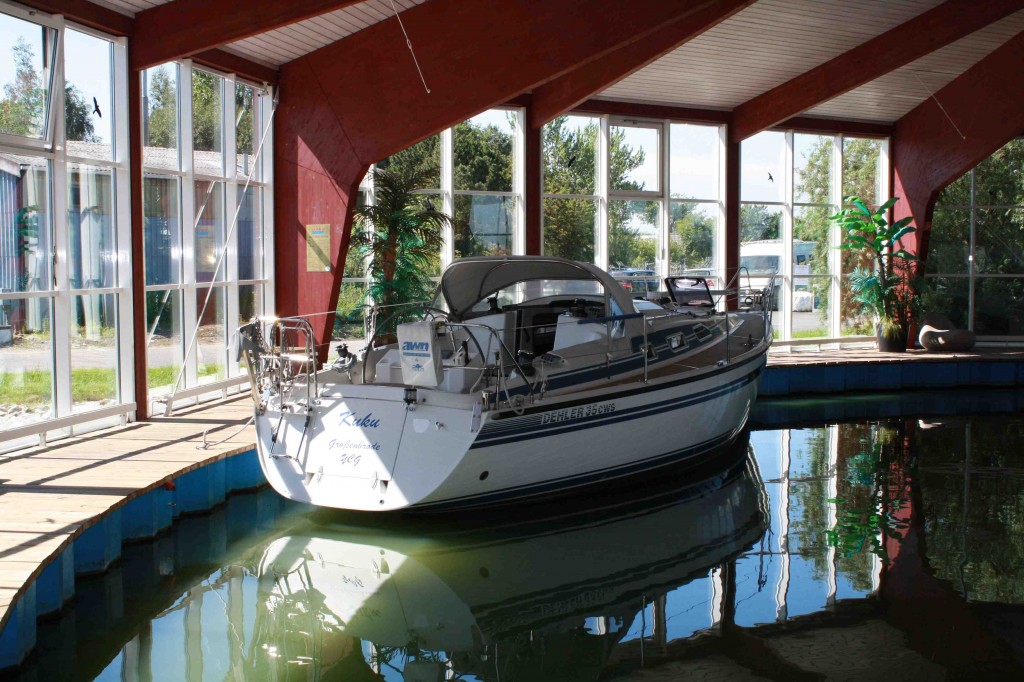
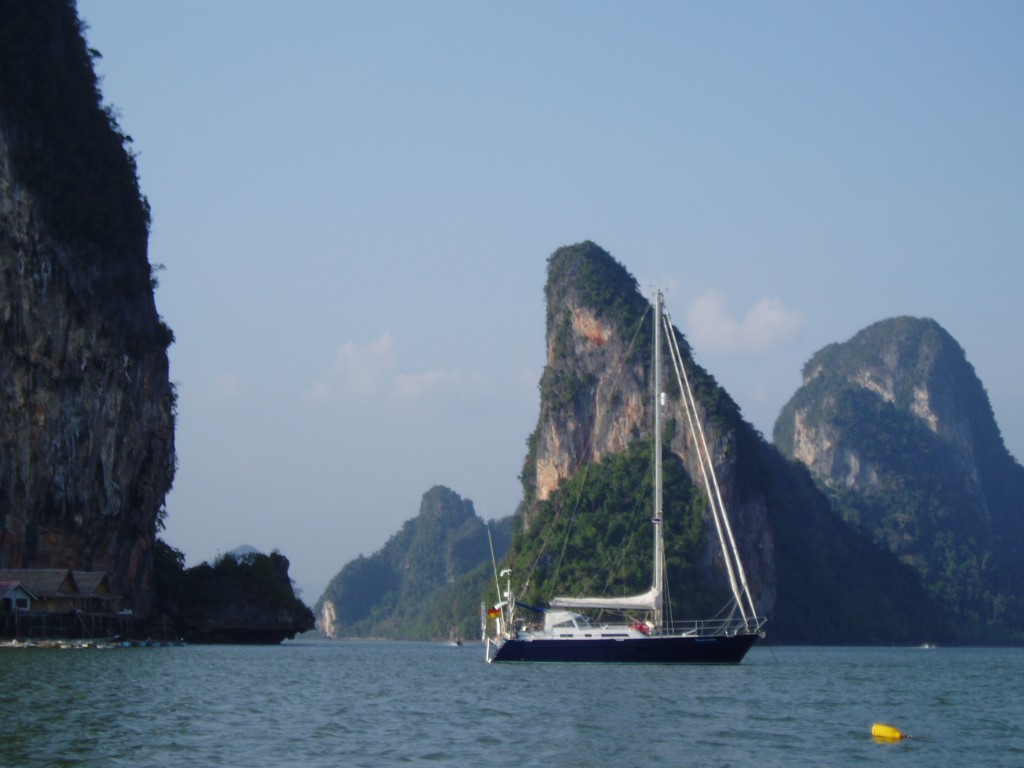
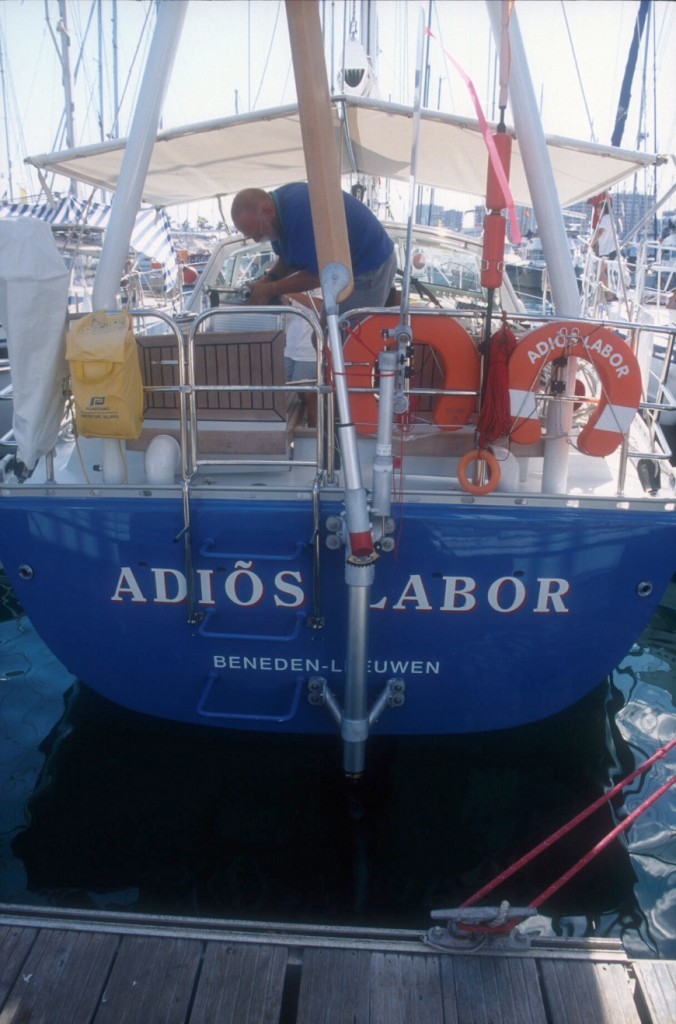
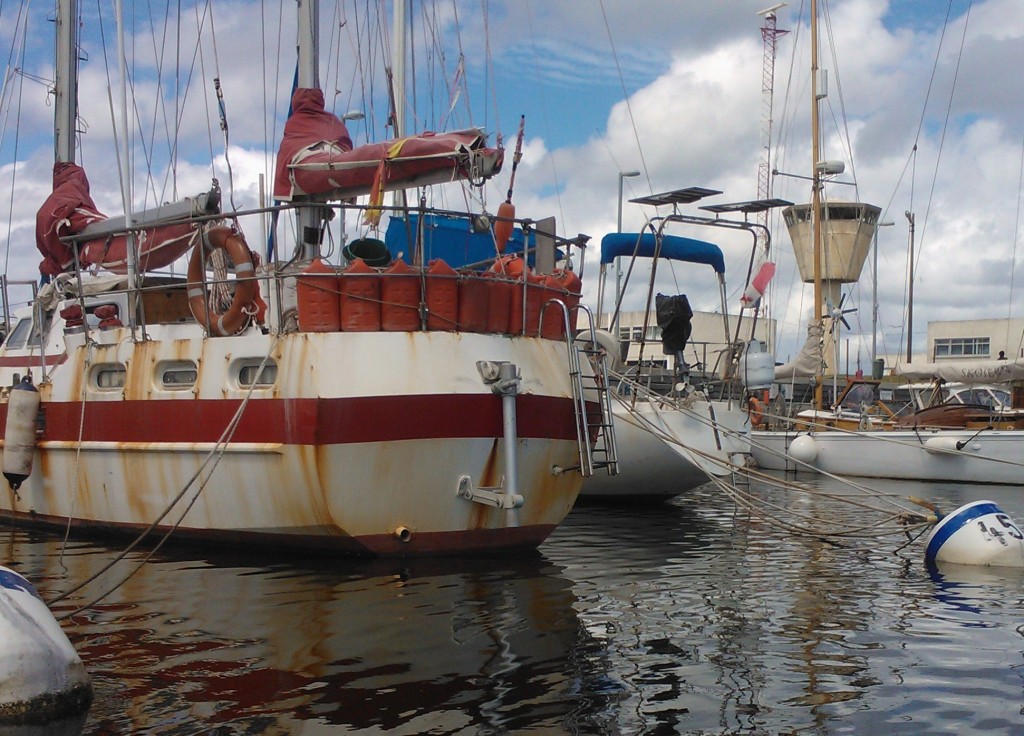
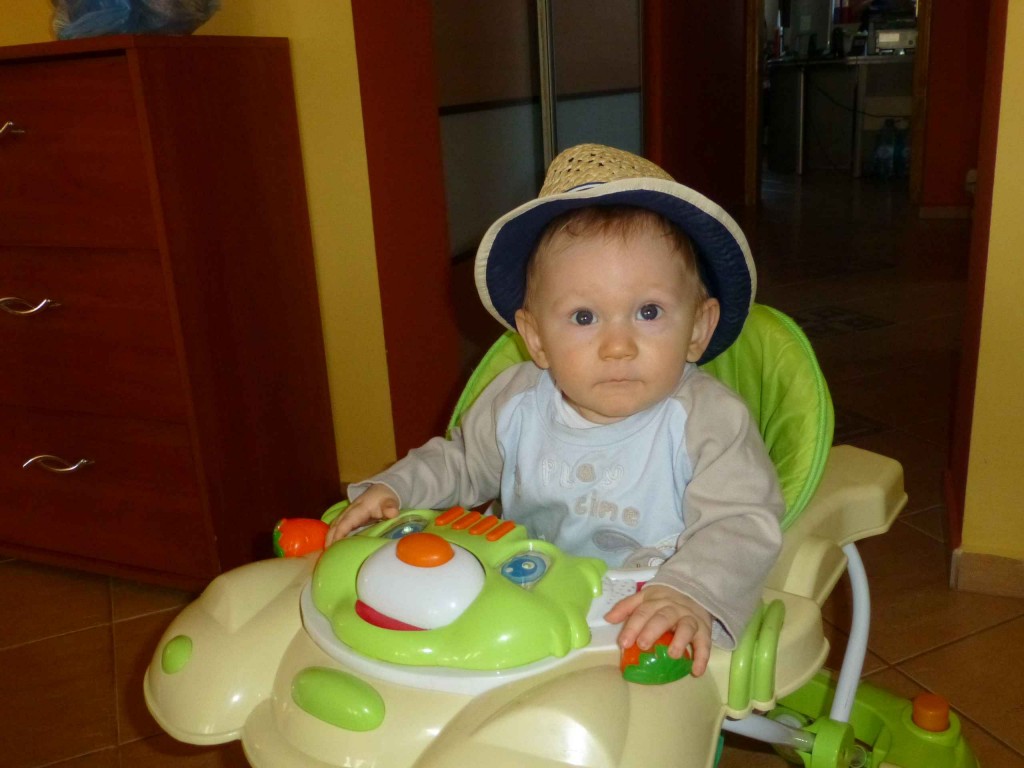
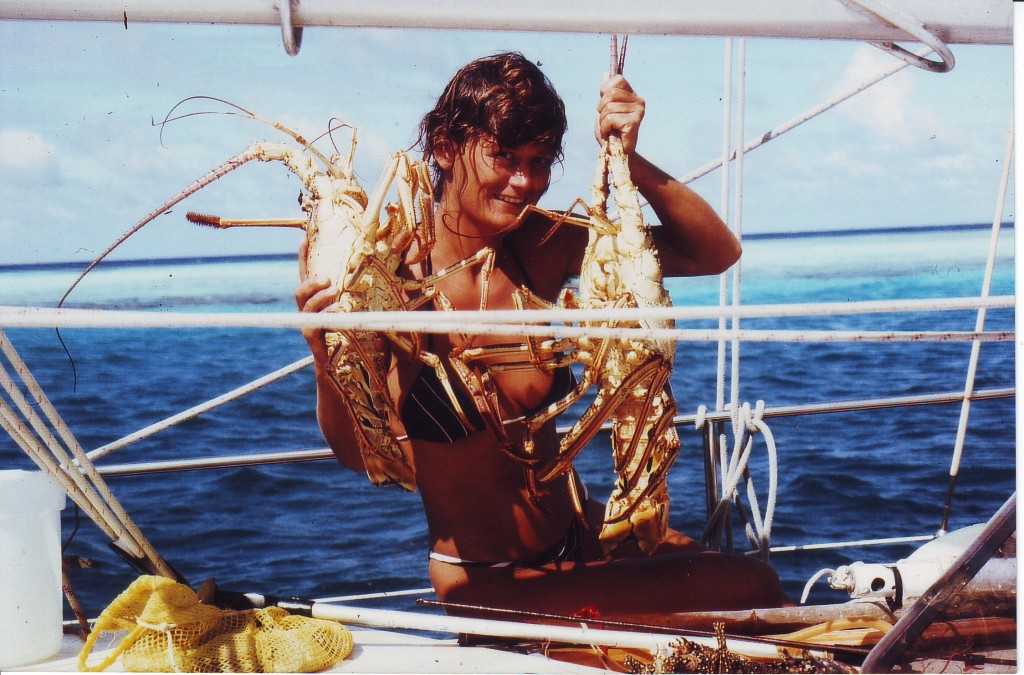

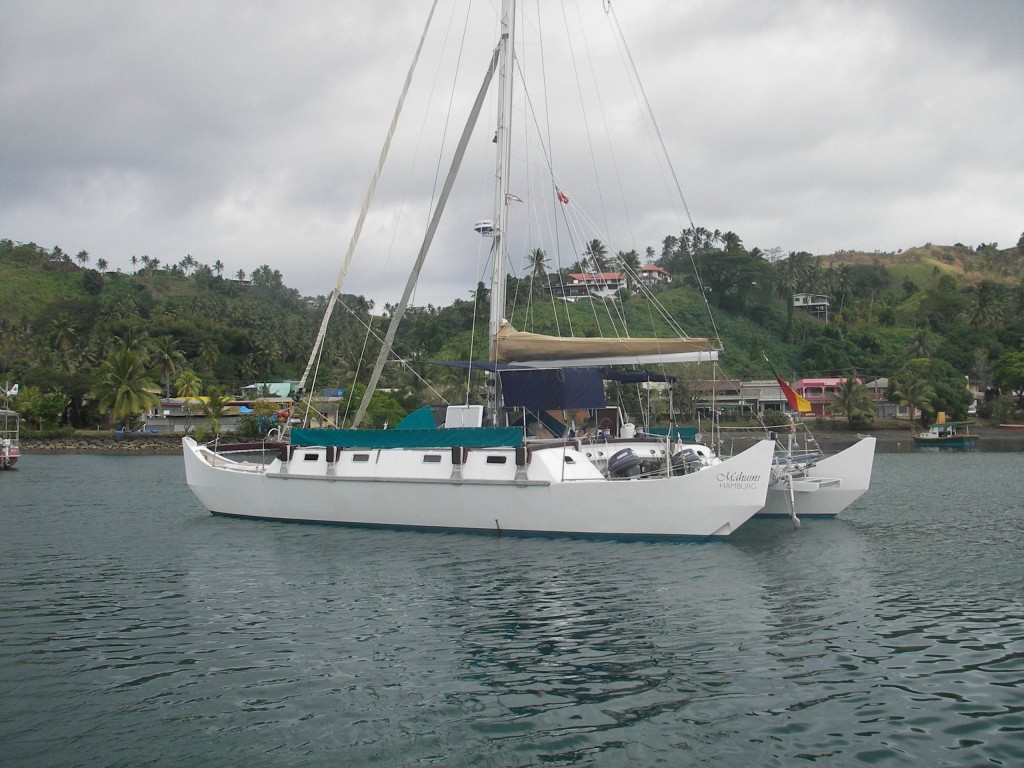

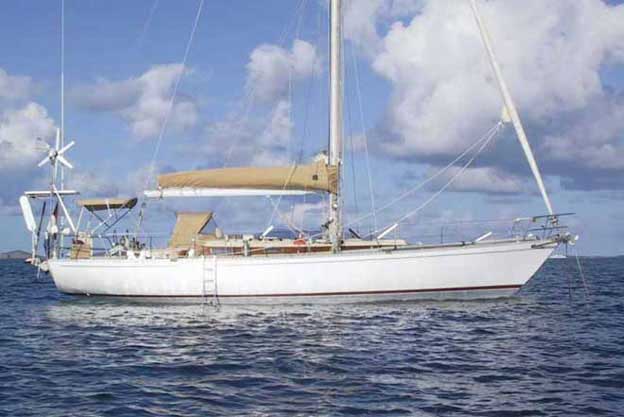
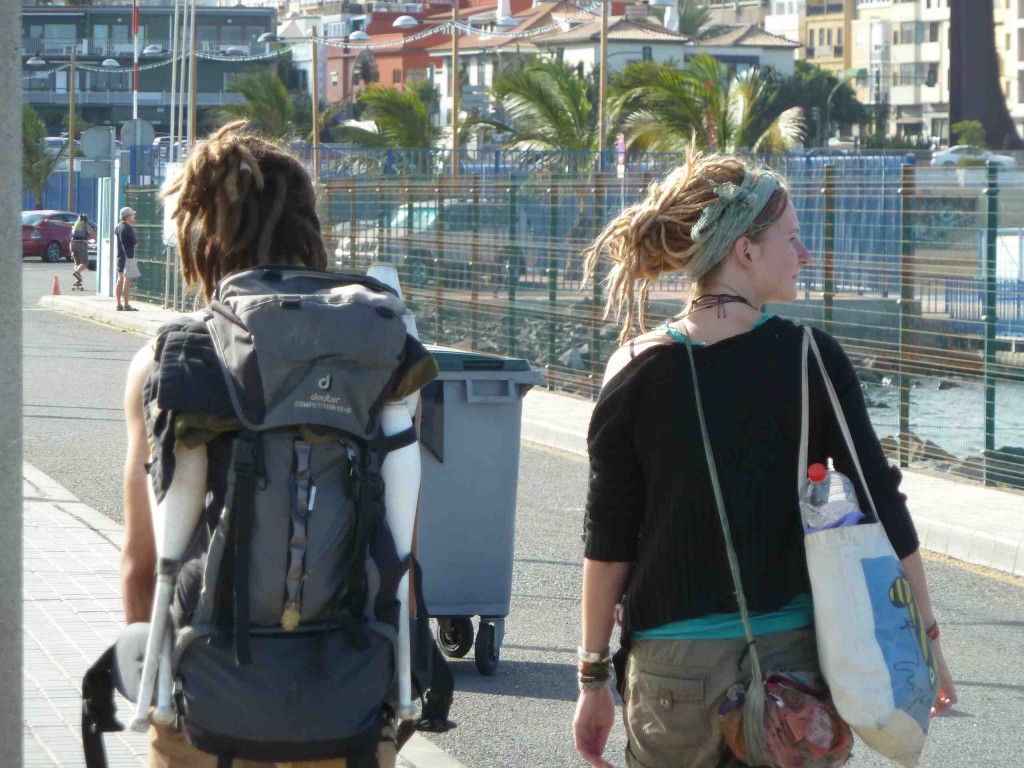
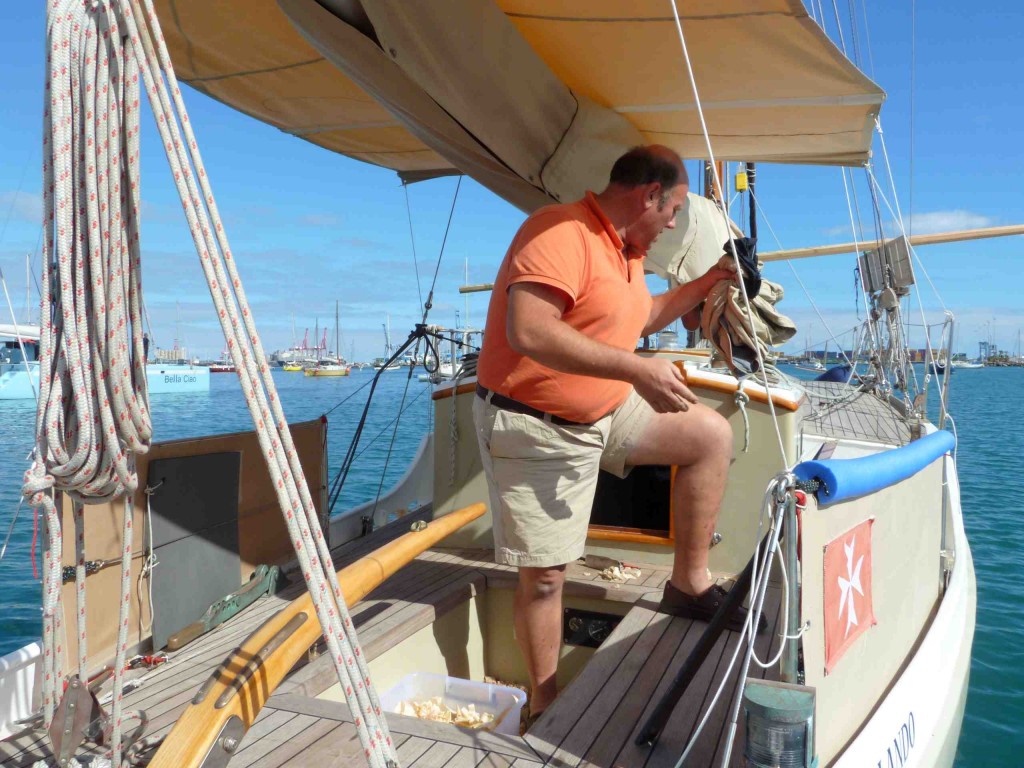
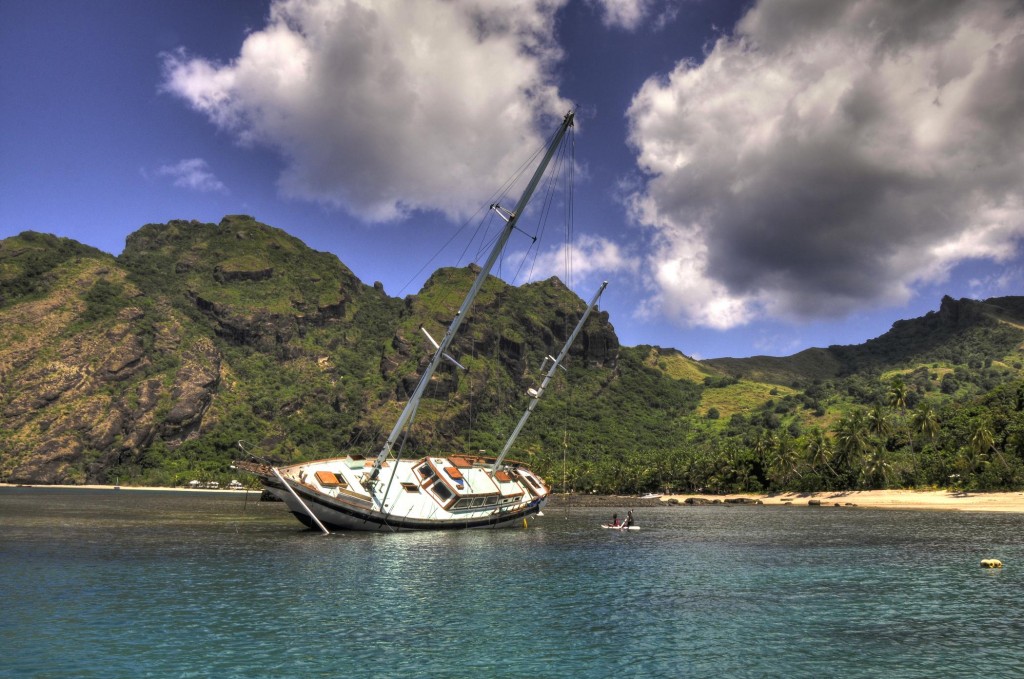
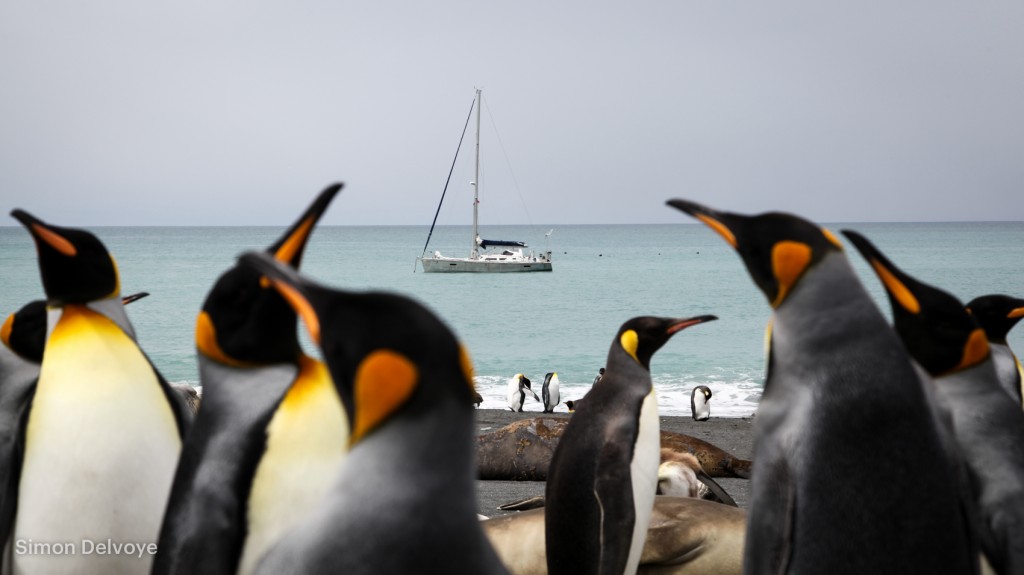






























GROSSARTIG!!!!
danke!